Barrie Freeman and his model of the Radio Caroline pirate radio station
.jpg)
A legend sails again.
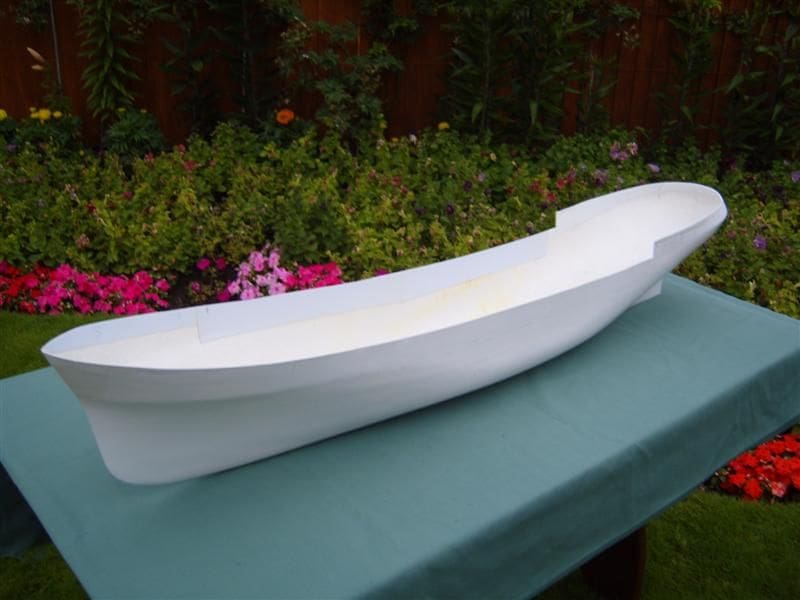
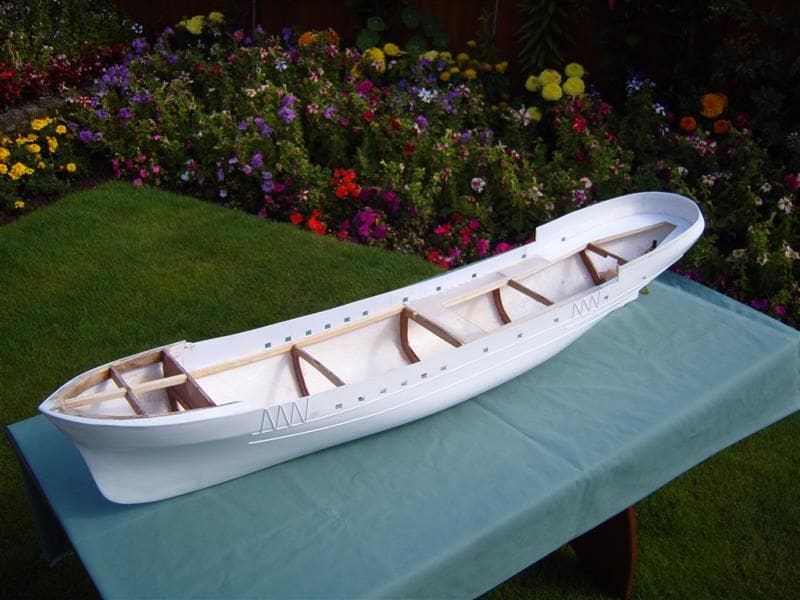
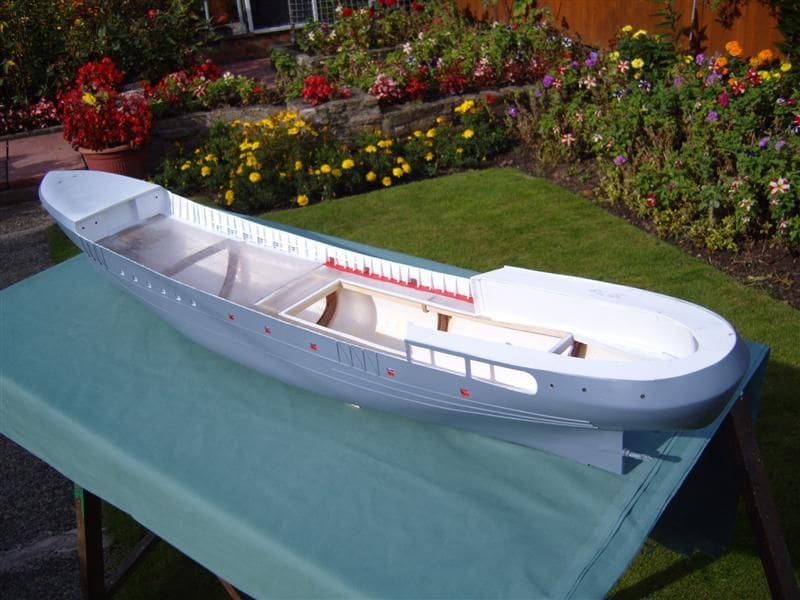
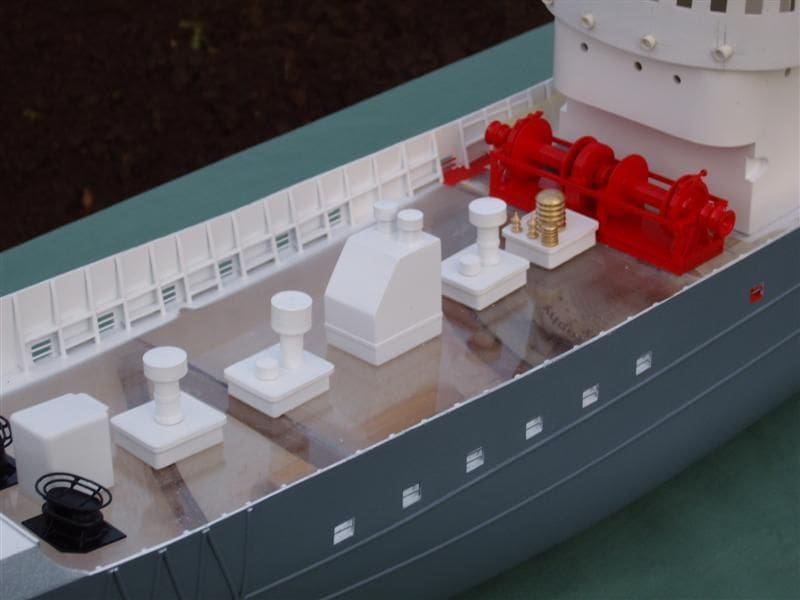
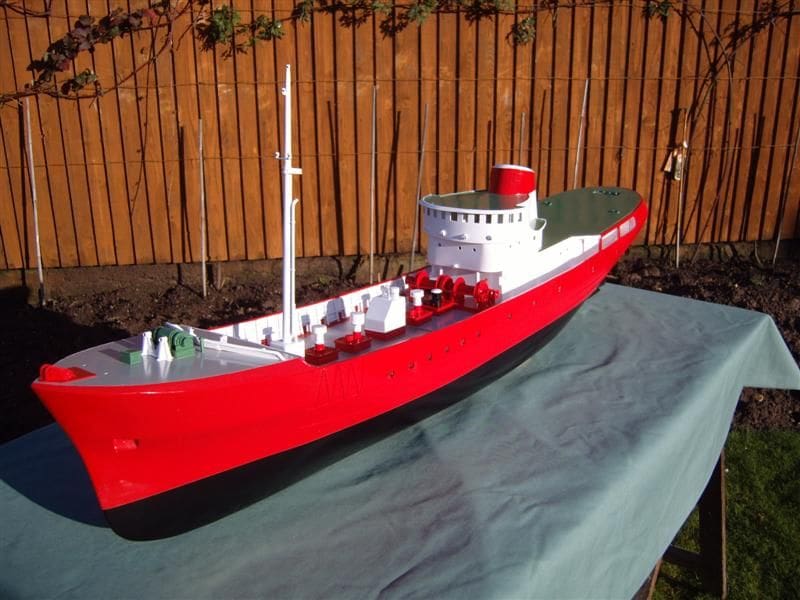
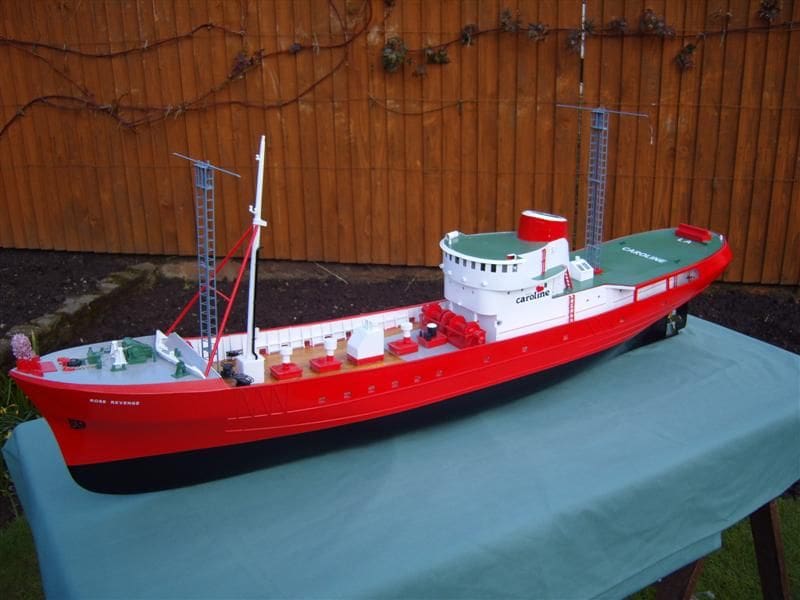
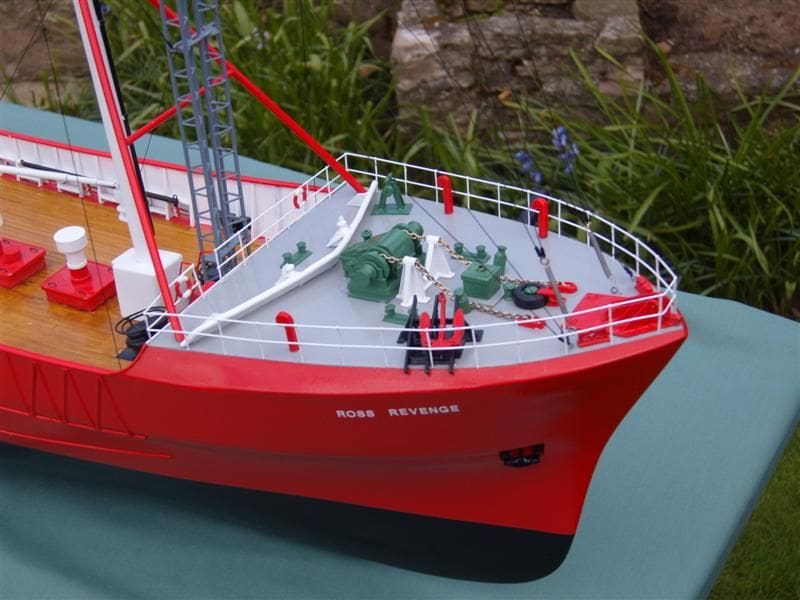
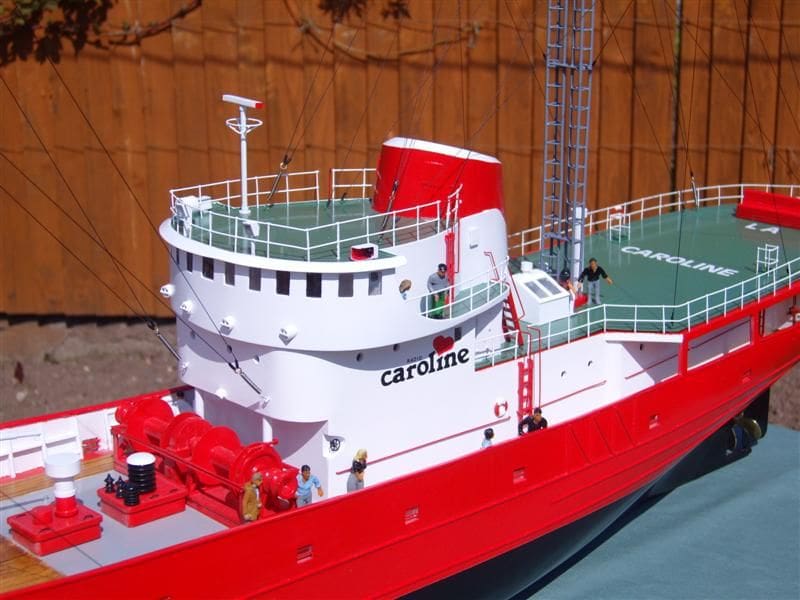
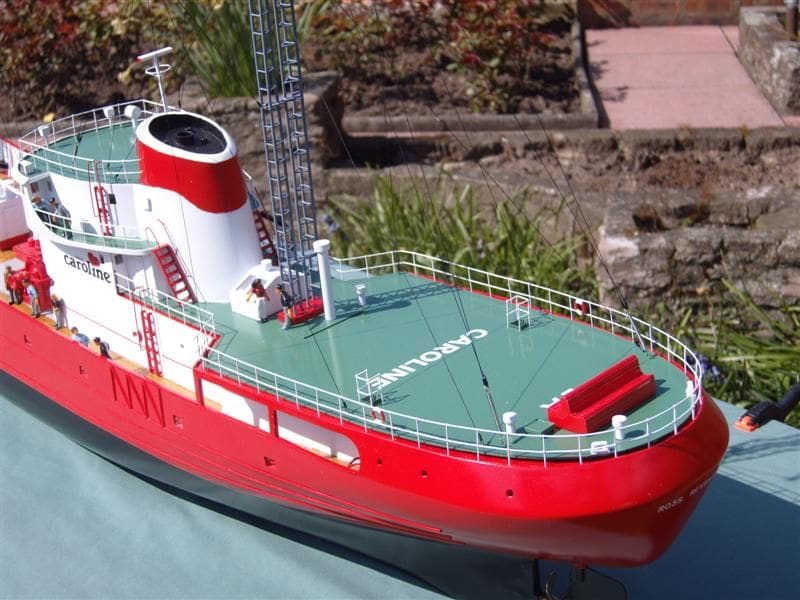
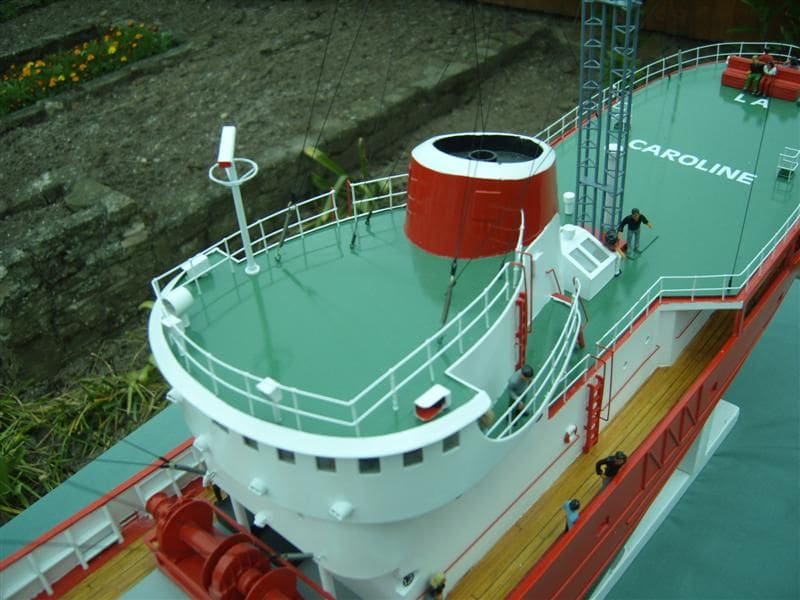
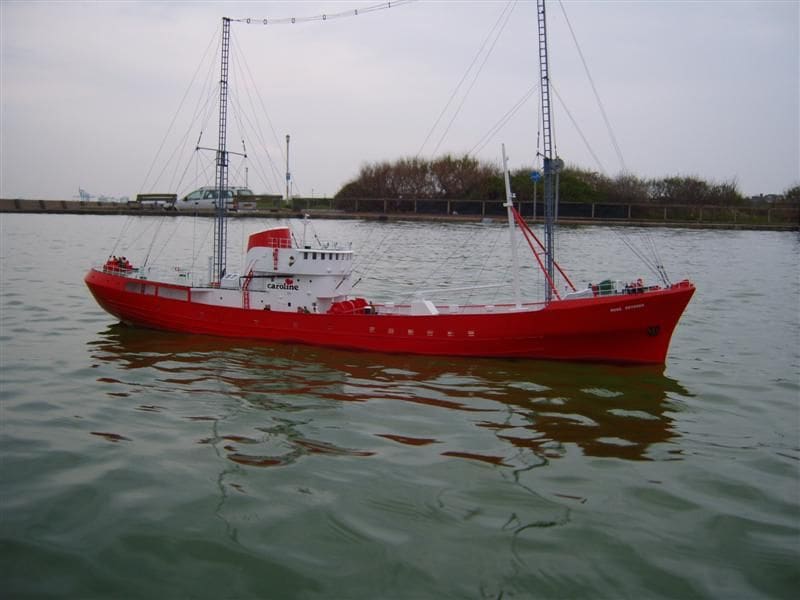
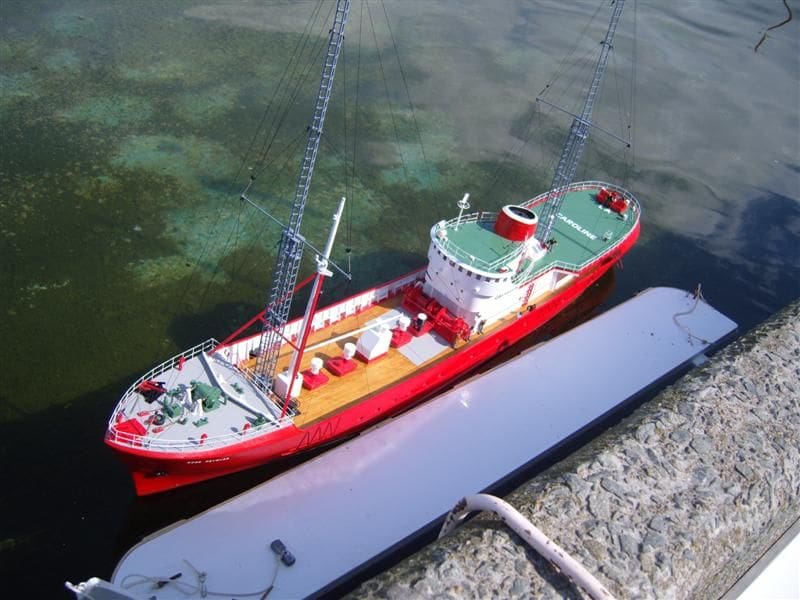
Getting started
Enjoy more Model Boats Magazine reading in the monthly magazine.
Click here to subscribe & save.
Ross Revenge was Radio Caroline’s third and last radio ship. She was built in 1960 in Bremerhaven as an Icelandic trawler named Freyr, then three years later became a British trawler owned by Ross Fisheries sailing from Grimsby and was finally converted to become Radio Caroline’s home between 1983 and 1990. She was wrecked on the Goodwin Sands in 1991, recovered and towed to Dover where she was promptly arrested. Currently Ross Revenge is at the Port of Tilbury in Essex, where she is being lovingly restored to her former glory by a group of dedicated volunteers. For more on Ross Revenge visit Alan Beech’s website: www.rossrevenge.co.uk
Having no plans available of the original vessel, there was no way I was going to be able to produce a perfect scale model hull, so I decided to try and find a GRP hull of a trawler that could be modified to give me a reasonably similar form to that of the actual vessel. I checked various manufacturers websites and decided one of those from Dave Metcalf (now marketed and manufactured by Models by Design) looked pretty close to what I required and was also about the right physical size to handle.
The hull, Portia, was 48 inches O.A.L. with a beam of 8 inches. When I compared this to the actual ships dimensions I found it would give me a model to a scale of 1/60 which seemed to me to be quite a reasonable scale to work with, allowing me to get some good detail on to the model. So off went my order and about 10 days later I had my hull.
Plans?
The first real problem I had was how to produce some plans from which to work. I had to think of a way of producing some from the photographs that I possessed. One that I found in a magazine was a port side view which was only about five inches in length. I traced as much detail as possible on to a sheet of paper then enlarged it twice until I had an outline of the vessel about 12 inches long. I now had some perspective of how long were the forecastle, main deck, bridge and aft deck and also the height of the bridge and funnel. Then, using a scale rule and a set of dividers, a side view drawing 48 inches long was produced to match the hull. So far so good! I now needed a plan of the deck and I used the same method, but this time using an aerial view photograph from the original article, a magnifying glass plus some patience and a fair bit of frustration to create the deck plan.
Hull
The modifications I had to make to the hull were mainly at the bow and stern. The bow was raised higher and given more flare and the knuckle at the stern was raised higher and extended forward about five inches using fibreglass matting and filler. The inside of the bulwarks were covered with plasticard to give a smooth finish for the supports to be attached, then they were then marked off showing the position of the deck. The main deck becomes a passageway either side of the accommodation and the aft deck is raised up one level. I then fitted five 1/4 inch plywood frames, but positioned to allow for the motors, batteries and ballast. Because the main deck was to be fixed with no access, I used 1/16 inch Perspex for the sub-deck in order to enable me to see and fix the ballast and battery into position. As this sub deck was to be planked, I was thus able to see into the hull until near the end of the build. The anchor housings were made and fitted into cutouts in the GRP hull, the propeller shaft and rudder post were installed, scuppers cut into the bulwarks and the rubbing rails positioned and glued on the outside of the hull. Ninety supports had to be fixed in place along the bulwarks.
Superstructure
The building of the accommodation block and funnel were to cause me a lot of problems, but with the trusted magnifying glass and Peters photographs I did get it to look right in the end, but the first attempt on the funnel ended up in the bin. The main problem with the bridge was getting the windows right. Because of the curve and because the funnel sloped in all directions, a frame had to be made and covered with plasticard. I decided at an early stage of the build that to give reasonable access to the interior, the whole aft deck would need to be removable. So I also included the bridge and funnel to be removable as one piece and the lower accommodation would be fixed to the deck. When the deck is in place a set of contacts ensure that power reaches the navigation and accommodation lighting. At the rear of this aft part of the deck, a removable seat was made to conceal the switches for the various functions – this avoids having to remove the deck when switching the model on and off.
Having completed the main structural features, I fitted out the model including sound effects made using a small tape recorder. Peter informed me that CDs of sixties music with the original Caroline jingles were still available on their website, so I purchased a set of three and made up two tapes. The recorder is operated by an on/off switch located next to the rudder servo.
Deck fittings
Using photographs once again, the deck fittings were made, including the fish hatches and some of the redundant fishing equipment. The main deck winch was made from plasticard, plastic tube and brass. The first windlass I made just did not look right when placed on the forecastle so that ended up in the bin together with the funnel. One thing that had me puzzled was a heavy frame arrangement right on the bow. A phone call produced the answer, namely that this was fitted while she was in the scrapyard in Scotland and was used for towing.
Aerial masts
The last thing I had to make were the two aerial masts – the forward mast being 24 inches high and the after one was 20 inches high. I had to give a lot of thought as to how I was going to make these as I could find nothing that I could buy which would do the job. It became obvious that these would have to be made using some form of jig and that the material would need to be brass for strength. It would require six separate sections to be made and each would have three uprights with triangular pieces as supports and that I would need a total of 132 of them. I used 2mm diameter rod for the uprights and 1mm for the supports.
I made a jig from of a piece of 1/8 inch thick aluminium, cut a triangular hole with a file, and from this I was able to make all the supports exactly the same. I then made another jig out of hardwood to hold the uprights in position. The supports were spaced 1/2 inch apart and soldered. I used linen thread for the aerial stays and as the top parts of the aerials are removable for transport and storing, these stays are tensioned using small springs.
The positions for the stanchions were drilled and these were fitted to the decks and the handrails were then fitted into them and superglued in position. The complete railings were then removed from the model and spray painted separately. It is always worth spraying hand rails if possible, as the colour coat can be 10% of the thickness of a hand painted rail. They were refitted and glued in position at the end of the build when all the rest of the model had been painted. The actual colour of the hull of Ross Revenge is Signal Red. The nearest I could find was Halford’s Fiat Red Orange and for the decks I used Ford Meadow Green from the same source.
I did have some concern about the models stability because of the height of the aerials, but these thankfully proved unfounded as the lead ballast that I had to install made her very stable even in quite rough water.
The model is operated with a two channel radio and works from a 12 volt supply. Caroline has a 555 type motor, Electronize speed controller and a Maplin amplifier for the radio sounds. The bright red hull certainly makes the model noticeable on the water. Much of the information about the history of the ship was gleaned from a book, Records at Sea by Mike Weston, £5.00 + p/p which is available from Radio Carolines web shop that can be located via their website: www.radiocaroline.co.uk. All proceeds go to help keep Radio Caroline operating.
Conclusion
This is a trawler with a difference, with the virtue that the full-size Ross Revenge still exists at Port of Tilbury and there are a large number of excellent pictures to be viewed on the listed websites. They do have open days from time to time. Total time to build was approx. 10 months and it was enjoyable researching, planning and building this model.
General particulars of Ross Revenge
Measurements are approximate:
O.A.L: 220 feet (67 metres)
Breadth: 34 feet (10.3 metres)
Max. draught: 19 feet (6 metres)
Gross tonnage: 980
Fish capacity: 300 tons
Engine: 2400 H.P. Werkspoor diesel
Max. speed: 18 to 22 knots
Fuel capacity: 120 tonnes.




